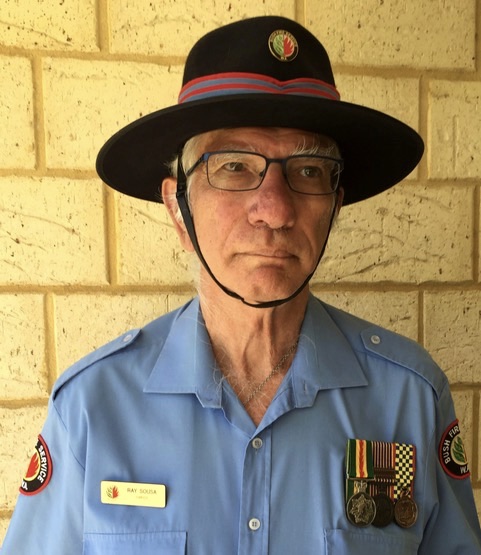
During the last few months of 2019, I kept in touch with our good friend and former colleague, Ray Sousa, who was keeping me up-to-date on the bush fire situation in Australia. I was aware that after leaving the Bermuda Police in 1974, Ray headed out to Australia with his wife Pat, and almost immediately Ray got involved in his local bush fire fighting team as a volunteer. He later became a Local Government Ranger and was closely involved with all aspects of fighting bush fires. Ray rose to the rank of Captain in the Brigade and in 1991 was appointed as Kwinana's Chief Bush Fire Control Officer and Ranger/Emergency Services Coordinator and gained invaluable experience dealing with major bush fires until his retirement in 2011. Ray is now retired although I have serious doubts that he knows the meaning of being "retired"! He remains a volunteer member of a Support Group with responsibility for assisting the dedicated officers who manage emergencies, including the bush fires currently plaguing Australia. Who better to describe to us the issues Australian authorities are facing in dealing with the fires that have drawn international headllines around the world.
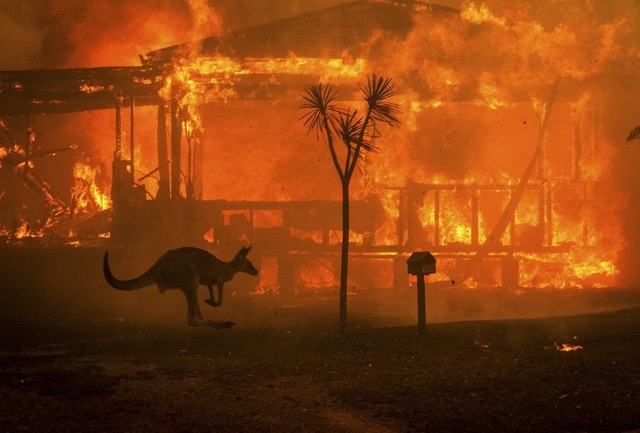
I have been asked to comment on recent bush fires in Australia, which I am happy to do. I wish to stress I did not attend the recent fires in Eastern Australia, and am only in position to give general comments. It annoys me reading articles by Australians and people from overseas who obviously have never fought a bush fire, studied fire behaviour, read about Australia’s bush fire history etc. First of all I will tell you about my background which influences my views on Australia’s bush fires.
My Background. After serving over 8 years on the Bermuda Police Force I came to Western Australia in 1974 and almost immediately became involved in local volunteer bush fire fighting. Officially, due to the fact I was serving in the Army Reserve I could not become a member of a brigade until I left the Army Reserve in 1977.
Due to my work as a Local Government Ranger I was already learning about, and enforcing bush fire prevention laws. Brigade service, research and training gave me additional knowledge. I served in all ranks in the local brigades including Captain. In 1991 I was appointed Town [now City] of Kwinana’s Chief Bush Fire Control Officer [CBFCO] and Ranger/Emergency Services Coordinator [RESC]. Later this became a joint Local and State Government position.
My first week in Kwinana saw me dealing with the largest fire in the area in living memory. It was fast moving, 47 degrees C, 47 knot south west winds and 7% humidity, very high fuel loads, very little fire prevention work. We had no air support in those days. This is in itself a story of heroes and miracles. That was my 150th fire for that Fire Season. In 2008 I was awarded the Australian Fire Services Medal [AFSM]. Since my retirement in 2011 I have continued my service as a volunteer member of the Serpentine Emergency Support Group [ESG]. Basically during an emergency we set up and manage an Operations Command centre/ vehicles/posts to help those who manage emergencies.
History of Bush Fires in Australia. Before we all jump on the bandwagon and blame everything on climate change we ought to look at history. Aboriginals have been in Australia at least 60,000 years, long before Europeans arrived. I am sure they saw climate changes many times. The natives lived on wildlife and “bush tucker”, developing a routine of moving camp about once a year within their territory.
Before changing camp sites they burned the bush to help regenerate it. When they returned to the site 5 or 7 years later there was plenty of wildlife and food on trees/bush. So the cycle of life continued. In some areas bush needed intense heat to open seed pods and to grow new plants. Other bush needed just a cool burn to regenerate.
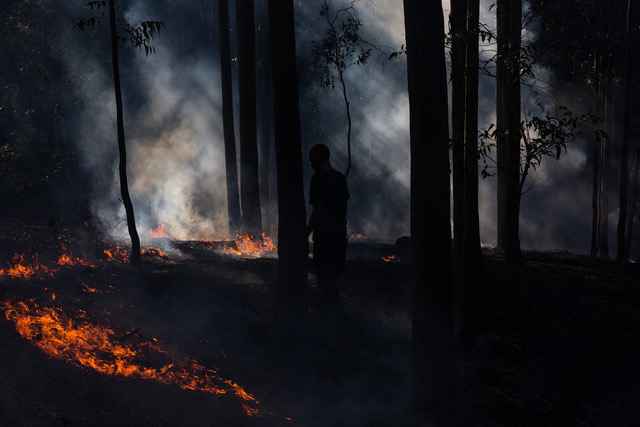
The amount of leaves/ground litter, moisture content, weather conditions, how/where you light etc helped dictate how intense the fire would be. How you manage fire and the land can help dictate the type of vegetation and animals that live there. There is evidence to suggest sometimes aboriginals got it wrong.
Arriving Europeans regularly saw fires, smoke etc and had no idea what the natives were doing. Based on experience they believed fires must be bad so the new arrivals banned burning. They had no idea that unlike tree leaves in most other countries, leaves do not break down and go into the soil in Australia; they dry up and stay on the surface.
The greater the fuel levels the more intense and dangerous a fire will be especially on a dry, hot, windy day. The settlers learned the hard way with loss of life and major damage. Even if people do not start fires, lightning can and will at some time.
So what does history have to do with present day fires? We still have extreme environmentalist/‘greenies’ who do not believe in firebreaks, clearing around their homes, fuel reduction burns etc. They want to hug and love trees! Well in extreme fire conditions those trees and everything near them will be destroyed unless preventive action is taken. The good news is there can be a compromise. When I was appointed CBFCO I had an area with an estate with housing surrounding bush land parks. Ground fuel levels were very high and we would have lost homes if a fire started there under certain conditions. My suggestions of fuel reduction burning were met with threats. It was amazing how many peace loving “greenies” had chainsaws which they were willing to use on me! I issued the legal orders and did my homework.
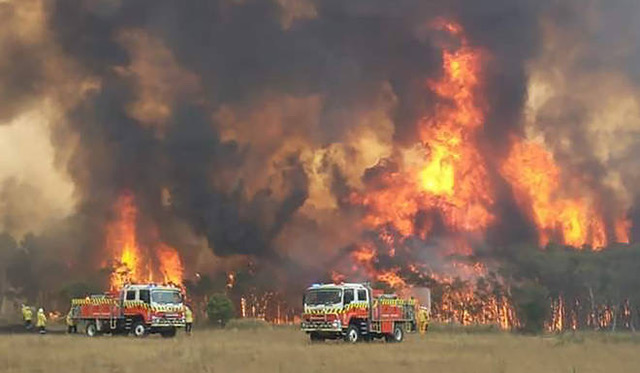
The local fire brigade went in using my burning prescription and burned a large reserve at night. As soon as they were finished there was heavy rain. It was as close to perfect as any burn could be. There was no evidence of injured or dead wildlife, and fire did not get into the trees, ground litter was removed. Within a week there was fresh growth.
At the time I was ordered to attend a meeting with the group who intended to stop the burn. They were shocked to learn the job was already done and amazed at the results. Gradually gaining respect of the community, I spent many years helping residents and developers prepare fire protection plans for estates, and properties including bush reserves. Often the plans included a combination of fire breaks, mowing/slashing safety zones around buildings, weeds and introduced grasses control, alternative fire escape routes from the area, fuel reduction burning etc. In extreme cases when I did not get cooperation I issued work orders and had the work done at land owners’ expense.
Many did not really appreciate this work until a fire entered their properties. Later new standards were introduced for home construction in bush fire prone areas. Such work still does not guarantee 100 % safety; but gives you a very good fighting chance. Sadly for different reasons, some very understandable, these standards do not exist or if they do, are not enforced in some of the areas destroyed by recent fires. No matter how good your Fire Brigades are, and we have among the best in the world, prevention work is needed before fires occur.
Some of the things that affect Bush fires’ behaviour. Ground fuel has already been mentioned and in most cases can be controlled. Topography is another issue, if fuel levels are the same a fire going uphill doubles its speed for every 10 degrees of slope. This has to be considered when building and fire fighting. Humidity, cloud cover, type of fuel and moisture content, temperature and wind strength and direction also affect fire behaviour.

On a hot day the heat causes gases to rise from the trees/bush leaves. In some cases you can actually see a haze above the plants. One spark can cause a tree top fire and even an explosion with a fire ball with burning embers travelling up to 20 kms starting new fires. This is called ‘spot over’ and ‘spot fire’. I have been trapped in fires where fire balls over a metre in diameter have flown over the top of me. On one occasion I had to run into burning ground lying down where there was oxygen. If I had run into unburnt bush I would have been roasted. Smoke and lack of breathable air can actually kill you long before you are burnt.
I have heard of far larger fire balls travelling even greater distances starting new fires. As well as tree top fires which can be over 60 feet, fire travels at ground level and, if there is peat or acid soil, underground. ??? Fires can create their own weather behaviour such as ‘fire willy willies’, sometimes called “Fire Devils”, and powerful fire tornadoes which are pretty but very dangerous.
During the Eastern States fires an 8 tonne fire unit was parked on flat ground in a safe location, when a fire tornado rolled the truck over killing a young firefighter. In Australia there are vast areas of hilly bushland with small towns, bush retreats, and homes. These beautiful bush areas attract many local and international tourists each year. Often there is only one road into the area. This is where the Australian Defense Force played a major role during the fires evacuating people by sea and air, plus getting supplies to stranded people.
The 1660Km [1030 mile] Eyre Highway connecting Western Australia to South Australia was cut off in places a number of times due to bush fires. There are other extremely large areas of bushland which are inaccessible and understandably hard, almost impossible to manage. When considering all the challenges the fire fighters had, you have to admire the wonderful job Emergency Services, including air intelligence and water bombing aircraft, did to prevent greater life and property lost. Public cooperation, often under stressful, difficult situations, is also to be commended.
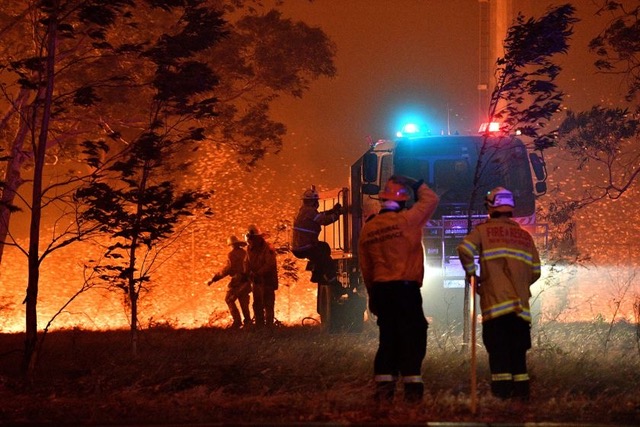
Climate Change…. As I hope you can now appreciate there are many issues that affect bush fires not just climate change that is getting most of the blame. There is no doubt that the earth’s climate is changing and man-made greenhouse gases are speeding this up. The earth’s climate is warming, there are increases in droughts, severe fires, rising sea levels, storms seem to becoming more dangerous etc. This has happened before and I totally support the idea we all must do something to try to reduce the speed of the change. On a personal level I have house roof solar panels that supply us with enough electricity, saving money and reducing greenhouse gases.
Australia has been correctly accused of among other things supplying other countries including China, one of the world’s worst polluters, with coal. Such exports are important to our economy and it can be argued if China got it from other countries lower quality coal would create an even greater amount of greenhouse gases. Then of course there are other issues such as worldwide land clearing including the Amazon forest, the lungs of the world. Although the Australian bush fires are extreme we have and will survive, but what about island nations who in the future will be under water?
Summary there are many issues that affect Australia’s bush fires including climate change. Australia must do more preparation and prevention work such as keeping fuel levels lower and, in turn, the intensity of fires. We can learn from the Aboriginal culture and use new technology to do this. This is now being seriously considered. The world as a whole must address the many climate change issues. I am confident we can find solutions and live in a changing world.
Interesting facts
# Australia is about the same size as the USA excluding Alaska. Australia has less than 10 % of the USA population. Australia is 32 times larger than UK.
# 2019/20 Australia’s Eastern States fires burnt 18,626,000 HA [46,000,000 acres] some of these fires are still burning and we are still in summer/bush fire/cyclone seasons. Bermuda is 21 sq. miles [5438 HA], UK 24.2495 million HA, England 13.0395 million HA
# In 1974/75 a bush fire burnt 117,000,000 HA in central Australia. Although clearly seen from space it had little impact on residents.
# Australia has 134 million hectares of forest which is 17 % of Australia.
# Although extremely large, the fires did not destroy Australia despite reports in the press. The worst impact major cities and populated areas got was thick smoke. A popular map that was circulated correctly showed the number and location of fires; but the fires were not to scale. In Western Australia those fires had very little direct impact. Our own fires so far have been quickly brought under control.
# Despite false reports, it is safe to visit Australia. If travelling in the country side/bush areas it is important you are prepared and informed of possible danger such as bush fires and storms etc. Equally important is to follow instructions of our highly trained paid and volunteer Emergency Services Officers.
# Overseas help was appreciated but at any time it was not much more than 200 – 300 people. The backbone of Australia’s fire services and supporters are volunteers from all walks of life.
# Sadly 30 people [not hundreds as stated in some reports], and possibly 1 billion animals were killed.
# 2683 homes were destroyed.
# Since 1851 about 800 people have been killed in bush fires, including 173 in 2009 Black Saturday Fires.
# On average there are 54,000 bush fires each year in Australia.
# At time of writing ½ billion dollars have been donated. This includes everything from kids’ lemonade stalls sales to large international corporations, billionaires, etc donating. There are strict guidelines to ensure funds are spent for the purpose they were given. Government is putting in large amounts of money to help those who were affected recover from the fires.
Information from Wilkipedia dated 14/1/20
Ray Sousa AFSM …….. Former DC 241
23/1/20
Late Note - A dying cyclone and other weather patterns creating heavy rain has helped put a lot the fires out. As a general rule 50 mls/2 inches of rain puts most fires out, however heavy rain creates other problems such as landslides and flooding. In some areas super cells caused major damage with hail stones the size of golf balls. Another late note. A water bomber went down today killing the 3 men American crew.